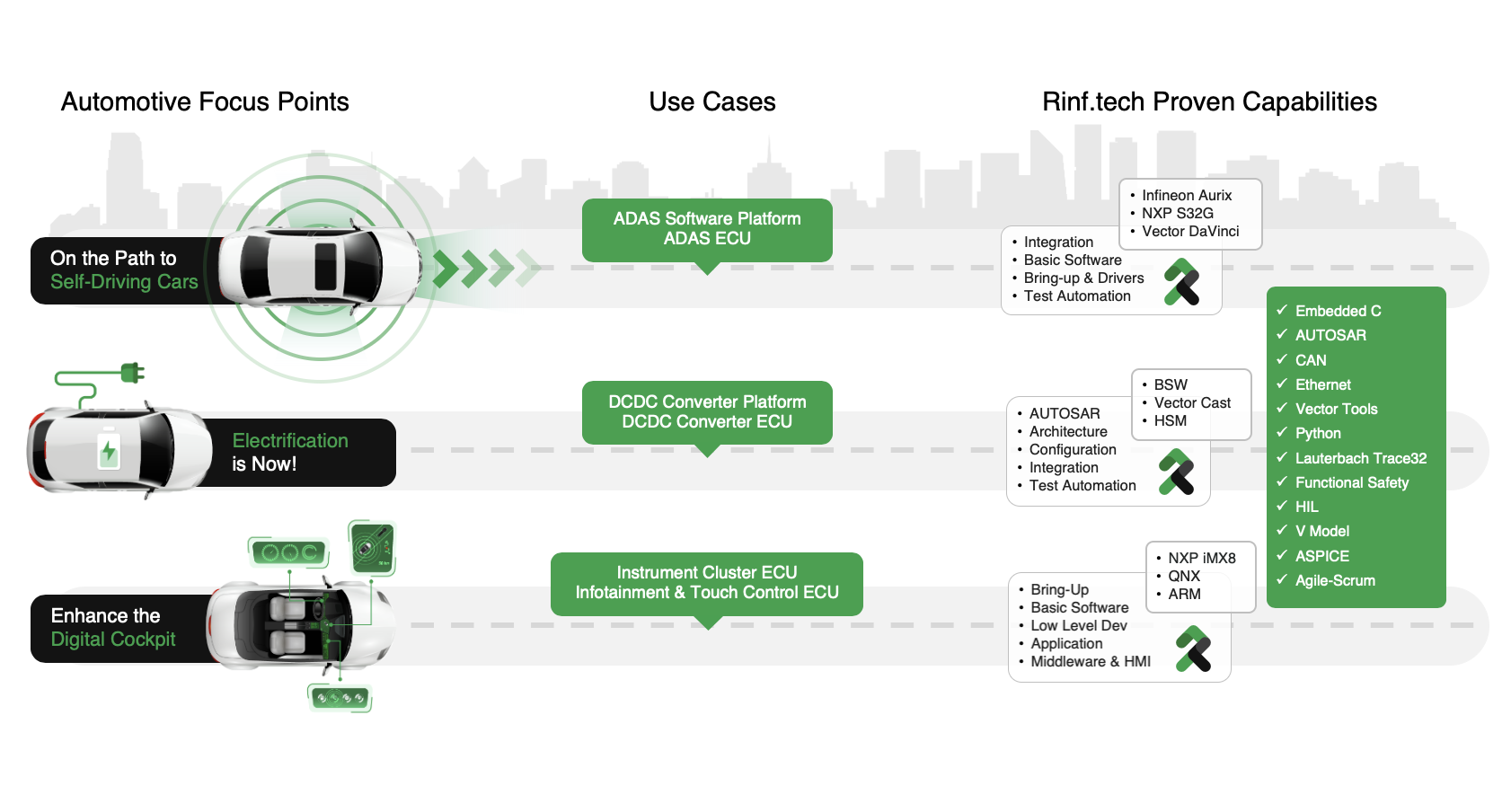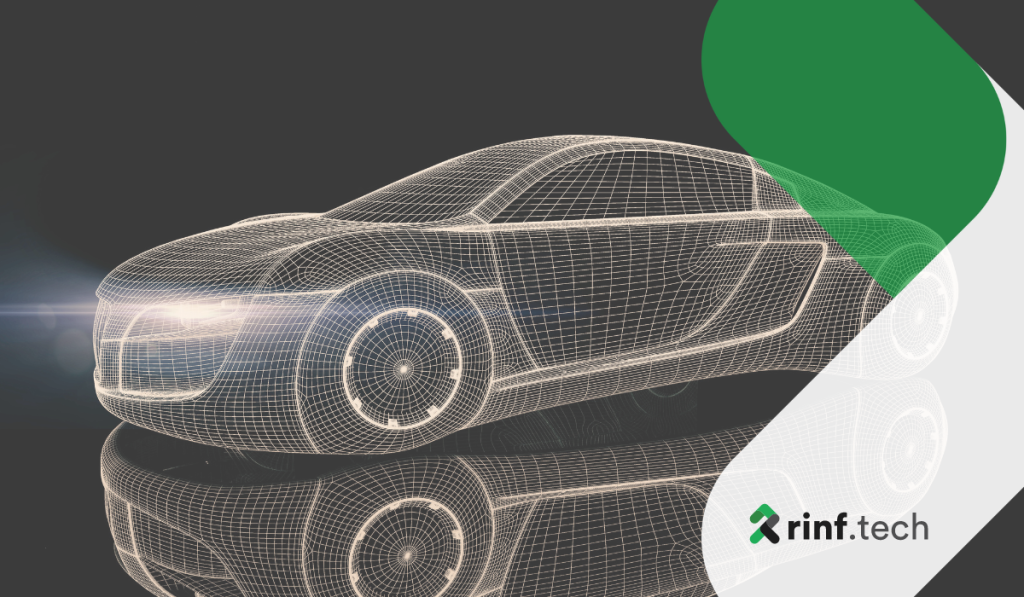
Top 10 Takeaways From AutoSens Europe 2024
Sharing trends that will shape automotive software development in the months to come.
The global market for autonomous vehicles is on an unprecedented growth trajectory. According to a recent report, the market for connected car technologies is expected to grow exponentially, reaching a projected value of $136.11 billion by 2032. This massive growth is driven by advancements in AI and sensor technologies, increasing investments in autonomous vehicle development, and supportive government policies promoting the adoption of SDVs.
This article delves into the myriad possibilities that AI introduces for augmenting the functionalities of Software Defined Vehicles (SDVs), alongside the crucial challenges that necessitate resolution to guarantee these avant-garde vehicles can navigate alongside human-operated vehicles on our roadways in a manner that is safe, efficient, and ethically sound.
The integration of Artificial Intelligence into Software Defined Vehicles opens a wide range of opportunities that promise to redefine the landscape of automotive technology and mobility.
AI’s most significant advantage to SDVs is enhancing autonomous driving capabilities. Through technologies like Computer Vision and Natural Language Processing (NLP), AI enables vehicles to interpret their surroundings accurately. These systems allow for real-time object detection, traffic sign recognition, and decision-making processes that mimic human judgment but with excellent reliability and speed. The global market for autonomous driving is booming, with experts predicting that fully autonomous vehicles could constitute up to 15% of auto sales worldwide by 2030.
AI also plays a pivotal role in optimizing vehicle performance. By analyzing data from various sensors in real-time, AI algorithms can adjust engine parameters for optimal fuel efficiency and performance, tailor suspension settings for enhanced comfort, and more effectively manage energy use in electric vehicles. This not only improves the driving experience but also contributes to sustainability by reducing emissions and energy consumption.
Personalization is another domain that AI significantly impacts. AI-powered SDVs can learn from user behaviors and preferences to offer a tailored driving experience. From adjusting the in-car temperature to selecting music based on mood or time of day, AI makes every journey unique to the driver and passengers. Furthermore, AI-enabled voice assistants can provide an interactive and responsive interface, enhancing the convenience and safety of vehicle operations.
Predictive maintenance illustrates AI’s potential to revolutionize vehicle upkeep. By analyzing data from the vehicle’s operational history alongside real-time inputs from various sensors, AI can predict potential failures before they occur. This ensures higher reliability and safety and significantly reduces maintenance costs by addressing issues proactively rather than reactively.
As vehicles become more connected, cybersecurity becomes more important. AI offers robust solutions for detecting and preventing potential cyber threats in real-time, safeguarding critical vehicle systems and sensitive user data against unauthorized access or manipulation. AI’s ability to adapt to evolving threats makes it an indispensable tool in the cybersecurity arsenal for SDVs.
Training AI models for autonomous driving requires extensive datasets, which are often challenging to compile, especially for rare or dangerous driving scenarios. Generative AI offers a solution by creating realistic synthetic data, enabling the simulation of various conditions without the risks and costs associated with real-world data collection. This accelerates the development of autonomous driving systems and enhances their reliability and safety by exposing them to a wider range of scenarios during training.
Integrating AI with Software Defined Vehicles presents many opportunities that can significantly enhance their functionality and efficiency. However, this integration has its challenges. These limitations are technical but also ethical, legal, and infrastructural, and they require a collective effort from all stakeholders involved in developing and deploying SDVs.
One of the major challenges is assuring the security and privacy of the vast amounts of data collected and processed by AI in SDVs. These vehicles rely on continuous data exchange to navigate, learn, and make decisions, raising significant concerns about user privacy and the potential for data breaches. Cyber-attacks increasingly target the automotive industry. In 2023 alone, there were 295 cybersecurity incidents in the automotive and mobility space, with 64% of these attacks carried out by malicious actors with harmful intent. Protecting this data against unauthorized access while ensuring compliance with global data protection regulations such as the General Data Protection Regulation (GDPR) in Europe is a complex task that requires robust cybersecurity measures and continuous vigilance.
The regulatory landscape for AI in SDVs is still evolving, with lawmakers needing help to keep pace with the rapid advancement of technology. The need for more precise, harmonized regulations across different jurisdictions poses a significant challenge to deploying SDVs. For instance, the variation in regulatory standards across the United States, where each state has its own set of rules governing the testing and deployment of autonomous vehicles, complicates the national rollout of SDVs. Establishing a comprehensive legal framework that ensures the safety and reliability of these vehicles while promoting innovation is a critical challenge facing the industry.
AI systems can be opaque by nature, making understanding how they arrive at certain decisions difficult. This lack of explainability and the potential for bias in AI algorithms pose significant challenges, especially in critical applications like autonomous driving, where decisions can have life-or-death consequences. Ensuring that AI systems operate transparently and without bias is essential for building public trust and ensuring the ethical deployment of SDVs.
The complex AI algorithms required for autonomous driving demand substantial computational power, which can be a limiting factor given a vehicle’s physical and energy constraints. A key challenge is developing energy-efficient AI systems that operate within these limitations while still delivering the required performance. This is compounded by the need for these systems to process and analyze data in real-time to make immediate driving decisions.
Finally, the scalability of AI systems and the supporting infrastructure presents another challenge. As the number of SDVs on the road increases, managing and updating the AI models across an entire fleet becomes daunting. This is further complicated by the need for robust communication and data exchange infrastructure to support the seamless operation of these vehicles in a connected environment.
Navigating the challenges of integrating AI with Software Defined Vehicles requires innovation, collaboration, and a forward-thinking approach. While the road ahead is paved with obstacles, it also presents numerous opportunities for progress and development.
The key to overcoming technical and ethical challenges lies in continuous research and developing innovative solutions. The automotive and tech industries are investing heavily in R&D, with global spending on autonomous vehicle technology projected to reach $85 billion by 2025. This investment fuels advancements in machine learning algorithms, sensor technology, and cybersecurity measures, driving progress in autonomous vehicle capabilities. Collaboration between academia and industry is vital in this context, fostering an environment where theoretical research is rapidly translated into practical applications and innovative solutions can be tested and refined.
Creating a coordinated regulatory framework that supports the safe and efficient deployment of SDVs is also crucial. This involves collaboration not only among national governments but also between international regulatory bodies. Efforts to develop standardized testing and certification processes for autonomous vehicles are underway to ensure that all SDVs meet rigorous safety and performance standards before hitting the road. Furthermore, establishing global data privacy and security standards can address AI and data management concerns, ensuring consistent user protection across borders.
Addressing the issues of explainability and bias in AI requires a commitment to developing ethical AI systems. This involves implementing design principles prioritizing transparency, fairness, and accountability from the outset. Engaging with the public and stakeholders through forums and consultations can also help in understanding societal concerns and expectations, guiding the development of AI systems that are not only technically sound but also socially responsible and accepted.
Technological advancements in computing hardware and infrastructure are essential to support the complex AI algorithms needed for SDVs. Research into energy-efficient AI processors and edge computing solutions is promising, allowing powerful AI computations directly within vehicles without compromising energy efficiency. Similarly, developing advanced communication networks, such as 5G and beyond, will enhance vehicle connectivity, facilitating real-time data exchange and coordination among SDVs and infrastructure.
Finally, ensuring the scalability of AI systems is fundamental for the widespread adoption of SDVs. This involves creating flexible AI architectures that can be easily updated and managed across vehicles. Cloud-based platforms and AI-as-a-Service (AIaaS) models are emerging as viable solutions, offering the scalability needed to efficiently deploy and maintain AI systems. These platforms also facilitate the aggregation and analysis of data from multiple sources, enhancing the learning capabilities of AI systems and, by extension, the performance of SDVs.
Integrating Artificial Intelligence with Software-Defined Vehicles marks a significant milestone in the automotive industry’s evolution. This synergy enhances vehicle functionality and performance and redefines the concept of driving, transforming it into a highly personalized, safe, and efficient experience.
The transformative impact of AI on SDVs holds significant implications for the future of transportation. As we stand on the brink of this technological revolution, AI possesses the power to enhance vehicle capabilities and redefine our understanding of mobility. This evolution towards more innovative, safer, and personalized vehicles is a testament to human ingenuity and a step towards a more sustainable and connected world.
By embracing the opportunities and addressing the challenges head-on, technology companies like rinf.tech, with their extensive R&D capabilities, ISO certifications, and TISAX certification, are well-positioned to lead this transformation. As we look to the future, AI’s promise of revolutionizing transportation is not just a possibility—it is a reality that is unfolding before our eyes.
The Role of AI in Software-Defined Vehicles — Aurora Labs
What Is a Software-Defined Vehicle? (youtube.com)
EN | Bosch Software-defined vehicle (youtube.com)
Software Defined Vehicles: The Future of Mobility (linkedin.com)
Self-Driving Vehicles—an Ethical Overview | Philosophy & Technology (springer.com)


Sharing trends that will shape automotive software development in the months to come.

Exploring how AUTOSAR enhances the security of SOTA updates, ensuring their reliable and safe deployment in software defined vehicles (SDVs).

This article delves into the intricacies of Software Defined Vehicles, exploring their evolution, key components, and the challenges faced in transitioning from traditional cars.